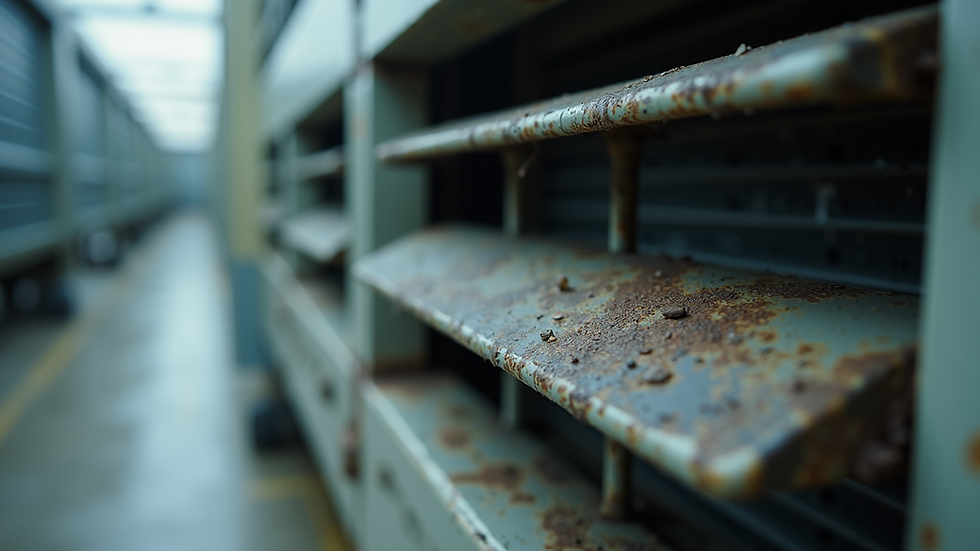How to Handle Sudden AC Breakdowns at Home
- rm0225546
- May 19
- 4 min read
Nothing disrupts comfort at home like a sudden air conditioner (AC) breakdown, especially during the sweltering summer months. It can happen unexpectedly and leave you feeling frustrated and unsure of what to do next. Knowing how to handle these situations is essential for any homeowner. Let’s explore the steps you can take to manage sudden AC breakdowns effectively.
Understanding Sudden AC Breakdowns
AC units are complex machines that can fail for various reasons. Common causes include electrical issues, refrigerant leaks, or mechanical failures in components like the compressor or the fan. According to the U.S. Department of Energy, about 75% of homes in the United States have air conditioning, and the majority depend on these systems to maintain comfortable indoor temperatures. When an AC breaks down unexpectedly, it can lead to discomfort and higher energy bills if not addressed quickly.

Signs of AC Breakdown
Before we dive into what to do when your AC fails, it’s essential to recognize the signs that indicate a potential breakdown. You might notice:
Warm air blowing from the vents
Unusual noises, such as grinding or squealing sounds
Water pooling around the AC unit
A musty odor emanating from the vents
Identifying these signs early can help mitigate the impact of a sudden breakdown.
Steps to Take When Your AC Breaks Down
When you notice your air conditioning system isn’t working as it should, follow these steps:
1. Stay Calm and Assess the Situation
The first thing to do during a sudden AC breakdown is to remain calm. Panicking will not resolve the issue and could lead to rash decisions. Instead, take a moment to assess the situation. Check the thermostat settings and ensure it’s set to cool. Sometimes, a simple change in settings can resolve the issue without further intervention.
2. Troubleshoot Minor Issues
If the thermostat is set correctly, there are a few minor troubleshooting steps you can take:
Check the Air Filter: A clogged filter can restrict airflow and cause your AC to malfunction. Regular checks can help prevent this from happening.
Inspect Circuit Breakers: If your AC unit has tripped the circuit breaker, reset it and see if the unit restarts.
Examine the Outdoor Unit: Ensure there are no obstructions like leaves or debris preventing airflow.
If these simple interventions don’t work, it may be time to call for professional help.
3. Call a Professional
When troubleshooting doesn't solve the problem, the next step is to request professional assistance. Calling an HVAC technician will ensure you get the problem diagnosed properly. Look for reputable services that offer 24/7 availability for immediate needs, including emergency air conditioning repair.

What is the $5000 Rule?
The $5000 rule is a principle that many HVAC professionals advise homeowners to remember. Essentially, if a repair costs more than $5,000, it might make more financial sense to replace the unit rather than continue investing in repairs.
Why the Rule Matters
Age of the Unit: If your AC is over 10 years old, it might not be worth investing significant money into repairs. Newer units are often more efficient, saving you money on energy bills over time.
Frequency of Breakdowns: If your AC breaks down frequently and repairs constantly stack up financially, it may be time for a more reliable option.
Increased Efficiency: Newer models are designed to be more energy efficient, which means lower costs in the long run.
Always consult with a technician to evaluate these factors when making your decision.
Preparing for Future Breakdowns
After handling a sudden AC breakdown, it’s important to take proactive measures to minimize the risk of future issues. Here are some actionable tips:
1. Schedule Regular Maintenance
Regular maintenance can extend the lifespan of your AC. Many professionals recommend scheduling maintenance twice a year—spring and fall. This includes cleaning coils, checking refrigerant levels, and inspecting for potential issues.
2. Invest in an AC Cover
If you live in an area with harsh winters, consider investing in an AC cover. This protects your outdoor unit from snow, ice, and debris, which can prevent damage during off-seasons.
3. Monitor Home Temperature Consistently
Using a smart thermostat can help you keep track of indoor temperature patterns. Some models can alert you if there are significant changes or potential problems with your HVAC system.

Staying Comfortable Without AC
If your AC breaks down during a hot day and you need to wait for repairs, here are some ways to stay cool:
1. Close Blinds and Curtains
Prevent heat from entering your home by keeping blinds and curtains closed during the hottest parts of the day. This simple step can reduce indoor temperatures significantly.
2. Use Fans Strategically
Ceiling fans and portable fans can help circulate air. Position fans near windows to pull in cooler air or create a cross-breeze in your home.
3. Stay Hydrated
Drink plenty of water to help regulate your body temperature. Having cold drinks on hand can also make waiting for repairs more bearable.
Final Thoughts
Dealing with a sudden AC breakdown can be a challenge, but understanding how to respond can make the process less stressful. Always assess the situation first, troubleshoot minor issues, and call a professional if needed. Remember the $5000 rule when making decisions about repairs versus replacement, and take proactive measures to prepare for potential breakdowns in the future.
By staying informed and prepared, you can ensure that your home remains a comfortable sanctuary, no matter the outdoor temperatures.






Comments